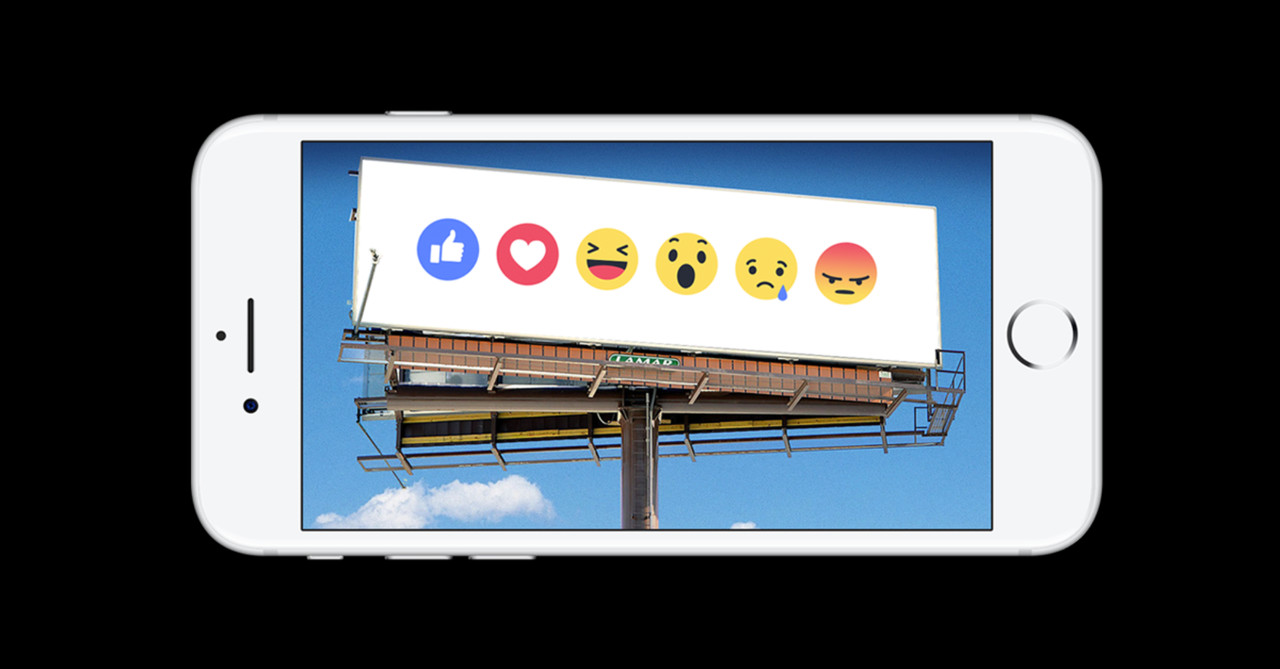Facebook marketing is no longer that advertising afterthought that CMOs can delegate to an entry-level candidate and consider it “taken care of.” According to most predictions, digital will overtake TV ad spending by 2019, but that shouldn’t surprise anyone! Just think, what website or social network do you check first when the commercials come on? As the emphasis on digital continues to grow, more and more budget will shift to Facebook.
To understand Facebook advertising for brands, marketers have to first recognize some very important things:
-
- Your customers are on Facebook. So are your potential customers.
- It costs money to reach those customers. Put very simply, it’s a pay to play model.
- People aren’t on Facebook to make purchases, but purchase behavior can certainly be influenced.
- As a medium that can serve multiple business objectives, measuring performance is not one dimensional.
Unlike other marketing channels, Facebook has the unique ability to serve both proactive and reactive advertising purposes. To focus on any one particular metric as an assessment of success overlooks the bigger-picture influence that the program can have on the consumer journey. Understanding the different goals and attribution models that exist within a platform that can simultaneously prospect new consumers and retarget returning ones is crucial when it comes to allocating budgets and assigning ROI values to the channel.
Why Should Brands Invest in Facebook Marketing?
Consumers are on Facebook and brands have the ability to target their audiences with incredible precision. According to Facebook, there are over 170 million active Facebook users in the U.S. and Canada alone. With a growing number of consumers spending an average of 50 minutes a day on some form of the platform (Facebook, Instagram, and Messenger) it makes sense for brands to attract them with engaging branded content. In addition to leveraging website custom audiences as a part of a social retargeting strategy, the extensive behavioral, interest-based, and demographic data available on Facebook can be used to identify new prospective consumers. That being said, if a brand does not allocate marketing budget for social spend, these robust targeting capabilities are rendered useless, regardless of how awesome your content might be.
What Should Brands Promote on Facebook?
As Mark Traphagen points out in his article Is Your Social Media Marketing Cart Before Your Horse?, people go on social media “to be entertained, to get informed, or to catch up with friends.” More brashly stated, people don’t sign on to a social channel intending to make a purchase. Consequently, not all promoted content should be entirely sales focused. When developing a Facebook marketing strategy, it is imperative to recognize that the consumer journey is not linear. The path to conversion often involves an interconnected web of various touch points (across multiple channels- both digital and otherwise) and consumers are reached at different stages in the sales funnel.
A brand’s Facebook marketing strategy needs to take into account the different stages of the funnel and appropriate content that engages consumers on a personal level. Far too many brands only promote Facebook content aimed at driving immediate conversion and miss out on the opportunity to influence the top-funnel consumers who make up the vast majority of potential audiences on social. Brands on Facebook should embrace an ongoing top-of-funnel strategy aimed at establishing awareness and ultimately trust amongst consumers. This effort will ensure that the brand is better positioned to convert those consumers down the road, when purchase decisions are actually being made. As Traphagen points out, “social media content designed to directly sell, is seen as an interruption.” Understanding this reality is instrumental in establishing a winning social media strategy. If a brand only utilizes Facebook to promote products for direct response, they are missing out on a huge segment of opportunity and probably irritating prospective consumers in the process.
Defining Quality Content
So what exactly is quality Facebook content then? It’s time we define that provoking little buzzword. Although content takes on many different forms, there are three conditions that must all be met to classify it as “quality.” Quality content for brands on Facebook must be:
-
- Aesthetically pleasing
- Entertaining or informative
- Relevant
First and foremost, quality content on social must be aesthetically-pleasing. Eye- catching creative stops users mid-scroll amongst all the clutter. 90% of Facebook’s daily active users are on mobile devices and for at least one split second, a brand’s piece of newsfeed content has 100% share of voice. In that split second, it’s the visual components that need to truly capture attention. Once your creative freezes that finger, the content needs to compel the user to contemplate its message. That brings us to our second qualification:
Quality content must be entertaining or informative. Ask yourself a simple question, is this brand post something that someone would consider worth sharing (whether that be because it’s funny, controversial, interesting, or simply provides useful information)? Content needs substance that, at the very least, earns an individual’s momentary consideration.
Lastly, quality content must be relevant to the goods or services that the brand provides. While a cute cat video might be entertaining, it’s probably not relevant for your brand.
Diversifying Quality Content
Establishing your brand as the industry expert should be at the forefront of your social media strategy. Rather than only using Facebook to promote specific products or services, brands should leverage a broader range of material to highlight interesting subjects that somehow connect an audience to the business. This type of entertainment-based content might be in the form of fun facts, how-tos, or even fan-submitted features and comes off as far less interruptive. It’s through these avenues that brands can really have fun, stand out, and establish credibility on social.
Successful brands on social make themselves relevant to potential customers over time. A consumer certainly does not need to buy your product or service everyday, but your product or service probably relates to a topic that does affect their everyday. Leveraging those topics to create content gives your brand the opportunity to position itself as a knowledgeable facilitator within the space. As you consistently promote interesting and informative content, consumers will begin to view your brand as the definitive source for the relevant topics and trends specific to your industry- and that is a wonderful reputation to have.
While promotional sales content should still be included as a part of a brand’s Facebook strategy (assuming it meets the established criteria of being aesthetically pleasing, entertaining/informative, and relevant), the expectations for such ads should be cognizant of the the sales funnel and the interwoven consumer journey. Moreover, direct conversions are not always the most accurate indicator of a campaign’s true success. For example, a user might be in the bottom of the funnel, see a direct-response Facebook ad on their mobile device (e.g. “One Day Sale!”), and make a well-informed decision to go directly to the business’ website on their desktop. They could make the purchase despite having never actually clicked on or engaged with the ad unit. That being said, promotional ads (and by this I reference content that is conceptually sales focused, e.g. “25% Off”) targeting lower-funnel users should clearly portray the value proposition of the particular brand and, more importantly, be delivered intermittently to audiences. You want to familiarize users with the goods/services of your brand and the types of special offers you might occasionally provide, but you don’t want to create brand fatigue or condition your consumers to only purchase when sales are available. As far as promotional types of ads go, there’s a fine line between being consistent in an effort to generate brand recall and appearing like spam.
Building Brand Trust
So you have quality content for Facebook, and you have the means to promote it to the right audiences, now what should you expect? In his article, Traphagen does a good job of establishing the three things marketing on social media generally does not give your brand. Namely, “instant trust, instant sales, or instant acquisition.” As previously mentioned, successful brands on social can only make themselves relevant to potential customers over the course of time. No single post will establish credibility for your brand. Instead, it’s an ongoing process of building trust through the collective combination of dynamic social content. Without a doubt, Facebook offers brands the opportunity to make routine touch points with customers and create strong relationships that (like those with real people) are founded on earned trust. Seeing an assortment of content (engagement-based page photos, exclusive promotions, videos, giveaways, blog teasers, etc.) that is not overtly and redundantly sales focused throughout the month can actually generate anticipation amongst consumers and contribute to consistent brand recall. By positioning a brand’s social channels as a forum for entertaining and informative industry conversations, a brand can convert spectators into advocates and rack up significant gains in market share.
Measuring Engagement
Positioning your brand as an industry expert with interesting and informative content on Facebook incites measurable engagement in the form of reactions, comments, shares, and other clicks. These metrics provide a good indicator as to the quality of your material, but may not tell the whole story. Just because an individual doesn’t directly interact with your content doesn’t necessarily mean they didn’t “connect” with it. In an ever-changing digital landscape, social ads are the 21st century’s thumb-sized versions of roadside billboards. The good ones will stick out. They should be entertaining/informing and placed strategically (by paid promotion) in a spot where visibility is high and most relevant. Seeing an ad, whether it be on a sign, in a magazine, or in your newsfeed, can incite a variety of different emotions and reactions, not all of which translate into tangible “engagement.” Getting the right eyes on branded content has always been (and always will be) important to marketers. That being said, the value of unique reach and ad recall rates should not be overlooked as meaningful Facebook metrics. Luckily for marketers, those values are not as abstract as they might sound. Understanding and tracking view-through conversions is a useful way to attribute actual revenue numbers to a brand’s Facebook strategy.
Conclusion
Social media isn’t going anywhere and brands that invest in a long term strategy of content creation and promotion are poised for success. Without a doubt, Facebook offers brands the opportunity to proactively reach qualified consumers with a wide range of dynamic content. A healthy balance of content that considers users in all different stages of the sales funnel can do wonders when it comes to earning consumer trust and eventual purchase consideration. Facebook is a valuable contributor to a much larger, overarching digital footprint and its effectiveness should not be overlooked. However, just like all other forms of marketing, it is not a one dimensional, self-supporting instrument. Time, effort, and budget need to be allocated in order to truly capitalize on its tremendous potential. A successful Facebook marketing strategy is diverse with attention-grabbing content, consists of topics and material informed by keyword research, and is measured taking a broad range of interplaying factors and objectives into consideration.


